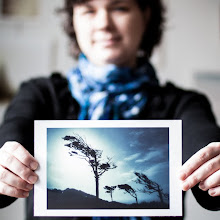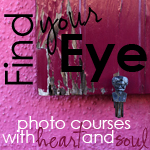Lessons from Abroad: Put Ideas on the Table
We’ve covered the first lessons from my experience abroad on finding your passion and purpose: Change up your schedule, Find a regular practice, and Get out of your comfort zone. This time I’m going to share a fun and easy lesson: Put Ideas on the Table.
As you begin to see the world of possibility opening up when you get out of your comfort zone, and you begin to receive all sorts of inspiration during your regular practice, you will find that you have a lot of new ideas. You need to put them someplace safe, where they won’t get trampled on. A place where they can be examined but not immediately decided or discarded. That place is “on the table.”
Let me explain what this means by telling you a story....
Early in our time in Italy, the move had definitely inspired my family to look at the world in a different way. As with any change, we were really examining our lives, both individually and as a family, and looking at what might come next. We had this opportunity, this little break from “reality” as I put it, which allowed us to dream up all kinds of crazy scenarios. The problem was, when my husband or I would bring up an idea, it was very easy for the other one of us to feel threatened and quickly point out all of the flaws - how it wouldn’t work for all sorts of reasons.
So during one of these conversations, where I had thrown out an idea and my husband was confused because it conflicted with an idea we had discussed several days earlier, I said, “I’m just putting these ideas on the table. Every so often, I want to pick one up, look at it from different angles, and then put it back on the table. We don’t have to decide right now.”
This concept, of putting ideas on the table, became a huge key for us to be able to really discuss ideas without the emotional attachments or reactions that can crush them too early or drive poor decisions. Let’s examine why…
It takes the idea from being a living piece of you, “your idea”, and makes it a thing, “the idea.” You can imagine it there as physical thing, sitting on a table, like a coffee cup in a store. You can imagine a discussion about it is the same as picking the cup up, looking at it from different angles. Then, you can just set the idea down and leave it there. No decisions or agreements have to be made from the discussion, just like nothing has to be done after you’ve looked at the cup. You’re just browsing. If the conversation starts to get emotional or personal, you can say, “Hey, ideas on the table here!” just to get the perspective back.
Not only does it reduce the emotional attachments we feel to our ideas, it also allows for several radically different and conflicting ideas to be held at the same time. Most of us probably like alignment in our lives. We have plans and like to know where we are going. When an idea that is diametrically opposed to our current direction comes up, it is easy to dismiss it without a second thought because of the disruption it would cause. But if the idea is placed on the table, it can coexist with numerous other ideas that have no relation to each other. You don’t have to think about them all at the same time or choose between them, you look at the ideas one at a time, and then put them back.
Over time, as you periodically examine the ideas, picking them up off of the table every so often, you will find that the ideas sort of magically whittle themselves down. Some of the ideas get dusty, sitting there. Some fall off the table and you never even notice, you just subconsciously discarded them. You might pick them up later, look at them, and think, “Yeah, done with that idea.” Eventually you end up with a few ideas that start to have actions formed around them. The discussion naturally transitions from evaluating the idea to acting on the idea. You may still not be fully committed to it, but you feel these ideas are worthy of more in depth investigation. Just because you choose to pursue one idea doesn’t mean the table has to be cleared off and all of the other ideas thrown away, they can stay there for the future.
This concept works with for you alone as well as with family and friends – any time a new idea comes to you. Here are some thoughts on how to use this to find your passion and purpose:
- First, be clear that you are putting the idea “on the table.” This might mean discussing the concept of “on the table” with your partner or just writing it down in your journal that you are approaching the evaluation of the idea this way. This frees up the emotional attachment, the fear of putting the idea out there only to be crushed. If you are going to use this with other people, I recommend starting it with ideas that are not the about your core – your passion and purpose – to make sure the other person really gets it and will play along. You might need to nurture those core ideas on your personal table for a while so they don’t get crushed too early by others who aren’t playing along.
- Once the idea is “on the table,” feel free to examine it or not as often as you like. It will be there any time you want to come back to it. If you feel yourself obsessing about it, leave it for a while. If you find you are dismissing ideas before you get a chance to get them on the table, consciously acknowledge the idea and then just leave it there.
- Use a physical tool, like sticky notes or a journal to represent the ideas if you want to “keep” them somewhere in the real world along with on the virtual table. I have an idea notebook, where I scribble ideas as they come to me, just to put them somewhere and move them out of my mind. Sometimes, I come back to these ideas naturally, examine them and start to do something with them. Other times, I will only examine them when I flip through the notebook. But they aren’t lost, immediately dismissed to be never thought again.
- If you find yourself starting down the path of action with an idea, either dismissing it or putting it into use, just do a quick check if that is really aligned with your true intention or if you are caught up in the “action trap” where you feel you have to decide in that moment. If your gut check says, yes, it’s time to move on this idea – then move.
The entire concept of “putting ideas on the table” has been a huge benefit for me, my family and anyone I’ve shared it with. Without this, an idea that needs time to grow and mature to be accepted can be killed too early. Or we can commit ourselves too early to ideas that don’t seem so good upon later reflection. The “table” is a safe place to keep them, examine them, and eventually sort them out – moving toward your passion and purpose all the while.
(Photo is from Dubrovnik, Croatia)























On the table is fantastic! We do a version of OTT but like your version. You are quite the Thinker,Miss K. Thank you for your wise counsel.
ReplyDeleteThis strategy is so simple, yet profound. it took my husband and me over 20 years to figure out how to discuss ideas w/o being so emotionally involved. You have so much wisdom to share. Grazie. Great photo.
ReplyDeleteIt's been great to read these lessons in order and all at once. I've taken notes on the first three, but this is such a wonderful idea I needed to stop and comment. On the Table is an idea we'll soon be able to put to use when we begin to consider remodeling our kitchen! I know we'll definitely have conflicting ideas. I have two similar notebooks, one in my purse, and one on my studio table that I use to jot down ideas. I think I'll dedicate a page to the "on the table" personal goals/ideas I have. Thanks!
ReplyDelete